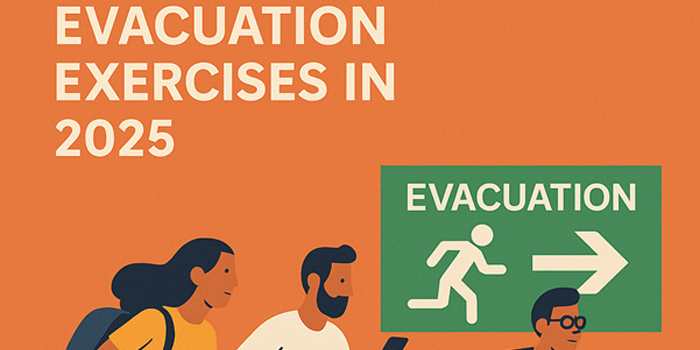Everyone loves a fire drill—said no one, ever.
But here’s the reality: evacuation exercises aren’t optional. They’re mandated under AS3745. And they matter more now than ever.
Why? Because buildings are more complex. People are more distracted. And emergencies don’t care if you’re a founder on a Zoom pitch or a nomad finishing a matcha.
AS3745 isn’t a suggestion. It’s law.
AS3745 requires emergency planning for facilities—including mandatory evacuation exercises. Not “nice-to-haves.” Not “we’ll do it when it’s quiet.” It’s minimum compliance. Fail to do it, and you’re legally exposed.
Exercises must be regular. They must be recorded. They must involve everyone physically present.
If someone’s inside the building, they’re part of the drill. Doesn’t matter if they’re there for five minutes or five months.
Drills are boring because you’re doing them wrong
Stale sirens. Half-hearted exits. Staff walking out mid-latte. That’s not a drill. That’s a fire-themed break.
To matter, drills need to challenge. Confuse. Disrupt.
Add complications: simulate a blocked exit. Pretend the stairwell is inaccessible. Introduce a medical emergency mid-drill.
Track how long people take to move. Who helps others. Who freezes. Measure reality.
Design drills like escape rooms
You want engagement? Make it a game. But keep the stakes real.
Build narrative into the drill: “There’s smoke in the hallway. The main door is jammed. What now?”
Hide QR codes with clues to alternate routes. Give small rewards to teams that evacuate the fastest, communicate the clearest, or assist others most effectively.
Gamified drills teach faster than lectures. They embed memory through pressure.
Digital nomads and founders aren’t exempt—they’re exposed
Founders are glued to laptops. Nomads wear headphones. These are your high-risk occupants.
They’re less likely to notice alerts. Less likely to know escape routes. And more likely to panic if caught off guard.
Tailor drills to snap their attention. Send forced Slack messages. Flash red overlays on screens. Kill WiFi during the drill if you have to.
Use the tools they rely on to shake them out of their focus bubble.
Reward participation. Shame avoidance.
Put up leaderboards. Shout out the most responsive teams. Offer free coffee to anyone who completes post-drill quizzes.
And for those who opt out? Track them. Report the data. Make safety culture public.
It’s not about punishment. It’s about visibility. If you don’t normalize accountability, drills become optional theatre.
Turn drills into drills. Real ones. Sweaty ones.
Evacuation isn’t always a calm walk downstairs. In real disasters, people run. They trip. They carry gear. They panic.
Run evacuation sprints. Time how fast people can reach a muster point carrying their bag. Offer incentives for physical readiness.
Integrate with wellness programs. Frame it as functional fitness. It’s literally life training.
Make drills a brand flex
Founders love to show off hustle. Digital nomads love a unique experience. Leverage that.
Document your drills. Share behind-the-scenes content. Position your space as not just cool—but resilient. Prepared. Proactive.
It’s not cringe. It’s leadership. Safety is the new swag.
If it feels like an interruption, good. That’s the point.
Emergencies don’t check your calendar. Drills shouldn’t either.
Disrupt. Train. Repeat.
Because when it’s real, you don’t get to practice.

